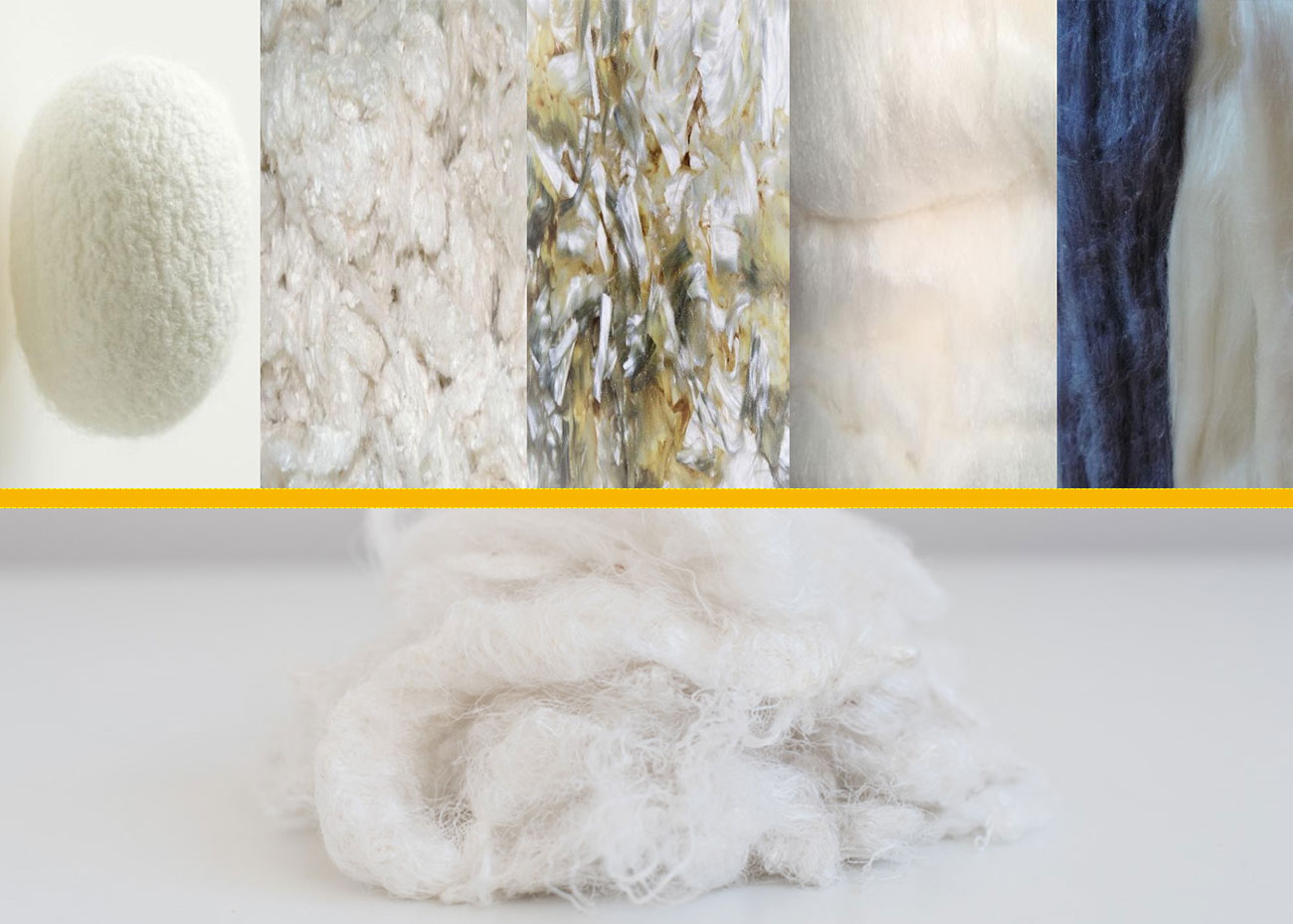Silk waste
Silk waste
The world of silk waste
In the textile industry the term ‘waste’ (cascame in Italian, dechet in French, Adfall in German, borras in Spanish) refers to short pieces of yarn that accumulate as they fall down during reeling, weaving or other treatments to which the raw materials are exposed to.
All those residues, having a lower value than the original material, are generally abandoned or set aside.
In the silk industry, the term silk waste refers specifically to the virgin silk fibers that are not suitable for reeling and throwing due to technological constraints: silk reeling uses continuous fibers, and any silk fibers that are not long enough for silk filament, are considered residual.
Discontinuous silk fibers
Silk waste, historically referred to as Schappe (Shappe) silk, comprises a world of very diverse materials. Within that range it is divided into two categories — gum waste and throwster’s waste – based on the processing phase during which they are produced:
Gum waste: silk waste that accumulates during reeling
- Cocoons not suited for reeling:
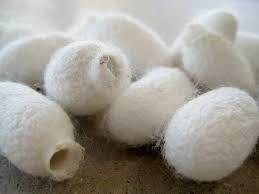 Some cocoons are not suitable for use in the production of continuous silk thread as they are not complete, do not meet quality standards, are crushed or damaged. These includes cocoon shells in which moths made a hole once the transformation of the caterpillar into a moth has been accomplished. The opening in the upper part of the cocoon prevents it from being used for the production of the continuous filament;
Some cocoons are not suitable for use in the production of continuous silk thread as they are not complete, do not meet quality standards, are crushed or damaged. These includes cocoon shells in which moths made a hole once the transformation of the caterpillar into a moth has been accomplished. The opening in the upper part of the cocoon prevents it from being used for the production of the continuous filament; - Primary waste of silk:
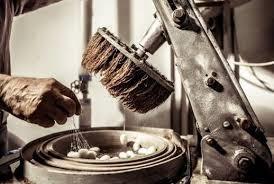 The silk waste that comes from yet before actual reeling, in the moment when workers search for the first and reliable thread to start the unwinding process. Sericin (read here to learn more about fibroin and sericin) comes out semi-melted. Once dried these particles form rather rigid “fiber sticks”;
The silk waste that comes from yet before actual reeling, in the moment when workers search for the first and reliable thread to start the unwinding process. Sericin (read here to learn more about fibroin and sericin) comes out semi-melted. Once dried these particles form rather rigid “fiber sticks”; - Fine reeling fibers:
Once it is not any longer possible to obtain continuous silk thread, there is still the whole of residuals which were left out. For the most part, it consists of cocoons that did not unwind completely and contain parts of the chrysalis which will be separated by subsequent processing. - Oblong and Wadding
Fibers and small particles created in the process of the cocoons’ opening
Throwster’s waste silk waste derived during various processes following the reeling, such as carding, combing, throwing and weaving
- Throwster’s waste: silk waste derived during various processes following the reeling, such as carding, combing, throwing and weaving
Characteristics of textile fibers
Each of the above classifications represents a special kind in the silk world. Every one of them has its own chemical and physical characteristics. In order to be used as raw materials or components in the textile production, most of these materials should be subjected to special treatments. It makes them different from continuous filaments.
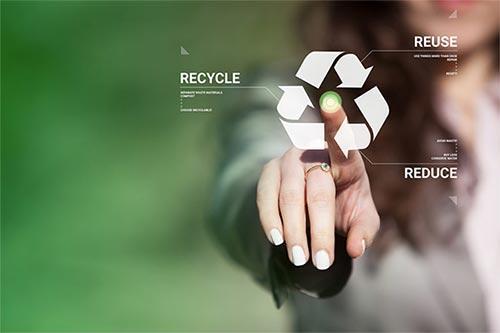 Cosetex has enhanced its know-how, technology and facilities, and created a traceable GRS (Global recycle standard) certified production chain in order to guarantee that its natural silk waste is 100% recycled
Cosetex has enhanced its know-how, technology and facilities, and created a traceable GRS (Global recycle standard) certified production chain in order to guarantee that its natural silk waste is 100% recycled
The products obtained in such a recycling process, whether in compliance with the GRS protocol or otherwise, become raw materials that can be processed further and turned into whitened or carbonized silk, or combed/carded yarn. These are used as semi-finished products to be spun. They can be used in carded yarn spinning, combed wool spinning, cotton spinning, i.e. in the production of yarns blended with other natural and/or synthetic and artificial fibers. Such threads can also be made into 100% silk yarns.
Sustainable silk fiber
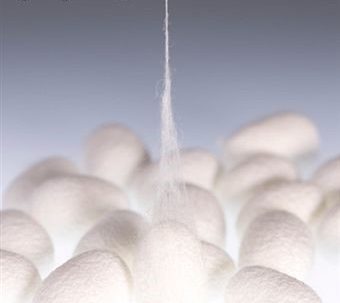 The nature created a sustainable system that produces a continuous thread: silk. It became a reference for production of all the artificial fibers. All the elements, including those which are not suitable for continuous filament, can be used in textiles and other industries. Silk threads and silk waste, continuous fibres and discontinuous fibres, all have their very own characteristics, for silk is a very unique material.
The nature created a sustainable system that produces a continuous thread: silk. It became a reference for production of all the artificial fibers. All the elements, including those which are not suitable for continuous filament, can be used in textiles and other industries. Silk threads and silk waste, continuous fibres and discontinuous fibres, all have their very own characteristics, for silk is a very unique material.
Silk waste, in its widest meaning possible, defines so many materials, from fibres to combed slivers and yarns. The silk universe is vast. It is a world that has its own rules, and makes use of indispensable technologies and extraordinary expertise.
The variety of silk types and qualities, its uniqueness and multiple possibilities of use in various sectors of economy constantly stir up the interest from big companies — sometimes of very different profile.
Already for three generations Cosetex has been working with silk, always aiming to preserve its uniqueness, develop its best features, enhance its contents and find innovative ways of using it

